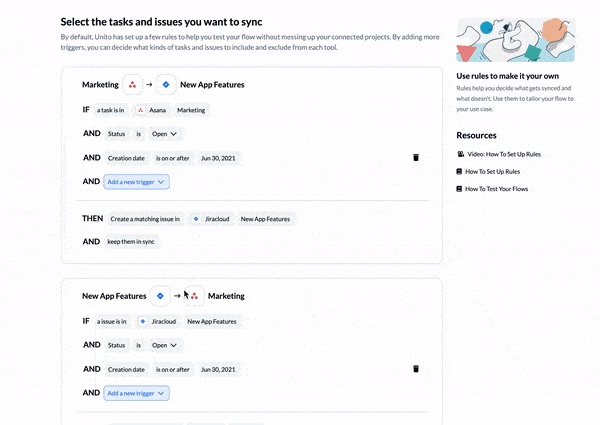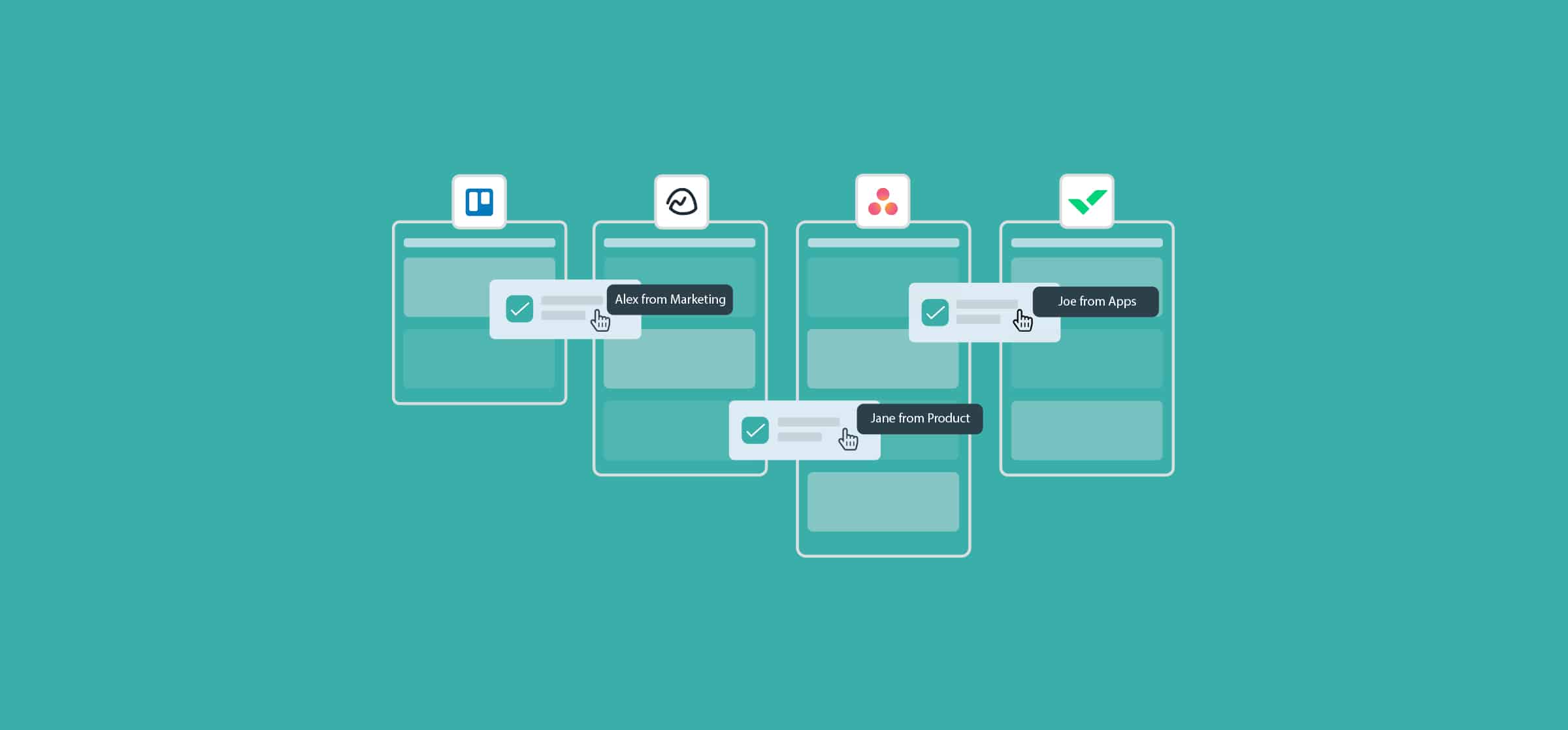How to Optimize Project Reporting Workflows With Unito
Every project has someone to report to. They may want updates monthly, weekly, or as they happen. A project may have many stakeholders, spread out among multiple teams, or a single one at the executive level. It’s usually a project manager or a team lead’s job to make sure updates are communicated to those stakeholders. That process can be time-consuming and complex, especially if expectations aren’t the same for everyone involved.
That project reporting workflow can be quite difficult to get a handle on since it’s tough to standardize. But with a workflow management solution like Unito you can simplify and streamline it, saving valuable time and effort on reporting.
Keeping track of company-wide deliverables
A successful business always has something on the go. A big product launch might still be a few months away, but development teams are consistently working at fixing things as they break, hitting new milestones, and testing new features. Maybe you know there’s a big marketing campaign around the corner, but there are other deliverables being worked that escape your notice.
You might be a CEO, an executive, or a team lead, and absolutely need to have access to these updates. Getting — and maintaining — visibility on a company’s key deliverables is a necessity for any leader.
The workflow without Unito
Here’s the status quo for anyone monitoring key deliverables: multiple meetings, throwaway progress reports, and muddled communication. That’s because project stakeholders might have absolutely no visibility into a team’s work, either because of a tool difference, a full-to-bursting daily calendar, or just because their focus is elsewhere.
That’s why so many projects involve progress report meetings, usually weekly. But having to get everyone in the same room just to rattle off a list of updates isn’t optimal. There’s the danger that updates are made visible to stakeholders after they’re relevant. No CTO wants to be made aware of a major issue three days after it happens at your weekly reporting meeting. They want important updates in real-time.
They may ask whoever’s responsible for communicating updates to do so via a chat app, an email chain, or worse, paper reports. There’s nothing wrong with asking for more updates, but it doesn’t change the fact that the person giving them is going to need to invest a ton of time and effort into doing so.
Where Unito comes in
Using Unito to manage your project reporting workflow means doing away with the status quo. It means meeting when you want to, getting rid of time-consuming progress reports, and streamlining communication.
When you use Unito, your tools become a boon to your workflow rather than unfortunate blockers. No matter where your people work, you can make sure the most important updates are transferred from their tools to whatever your stakeholders are using. Not only are you making sure that no one needs to leave their tool, but you’re also empowering stakeholders to get the updates they need when they’re needed. No more reports and meetings. Instead of requesting updates, key information is always front and center for stakeholders.
And this goes both ways. Not only can stakeholders request updates directly, but the people involved in those updates can respond without relying on a middleman. Say the head of marketing wants to get more detail on a paid advertising campaign before it launches. Usually, that request would go through a project or middle manager, then on to the person responsible, before following that same process in reverse. When you give stakeholders the ability to talk directly to people involved in a project — and it’s all open and transparent — you make sure everyone has all the information they need at their fingertips.
Sending key deliverable Asana tasks to Trello with Unito
Transparency and self-serve reporting are so important to Unito that we used our own product to build a key deliverables board that anyone in the company — especially our CEO — can access.
Work is happening throughout a suite of tools. Developers are using GitHub, sales are using HubSpot, marketers are using Asana, and so on. But the leaders of each team keep track of their team’s efforts in their own Asana project. Even within the same tool, people tend to stick to their own projects, only dipping into others when they’re collaborating on something.
For executives, that’s far from ideal. They don’t want to hop from one Asana project to another to get the updates they need. In fact, they might not want to go into Asana at all. Maybe they just want something visual and easy to grasp, like a Trello board.

Every card on this board comes from an associated Asana task. No matter which project it’s in or which team’s working on it, if it’s a key deliverable, it’ll get picked up and added to the Trello board. How does this work?
All you need is a label and a rule. Asana lets you use labels to organize tasks at a glance. In an editorial calendar, you might use them to organize content by type, whereas a bug-logging project might use labels to identify priority.
But for this workflow, you can create an Asana label called “Key Deliverable.” If a task is important enough that executives need visibility on it, you assign that label to it. That’s step one.
The next step is to connect Asana with Trello using Unito and set up a rule. Rules are how you can control the flow of information between tools, such as filtering tasks with a specific label, as you would in this scenario.

To set up this rule, you just need to add a trigger that looks for specific tag, like “Key Deliverable.” This means the Key Deliverables board in Trello is only populated with high-priority tasks that executives need to keep track of. This board can be used to drill down on specific tasks or — as our CEO likes to do — show off at the weekly all-hands meeting.
Project reporting doesn’t have to be complicated
This is just a taste of what Unito can do for the project reporting workflow. By syncing your tools, you’re turning a suite of platforms into a single collaborative environment. Instead of accepting the tool silo status quo, you can create true alignment, promote collaboration, and make sure your stakeholders are kept in the loop every step of the way.


